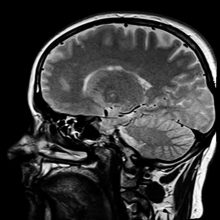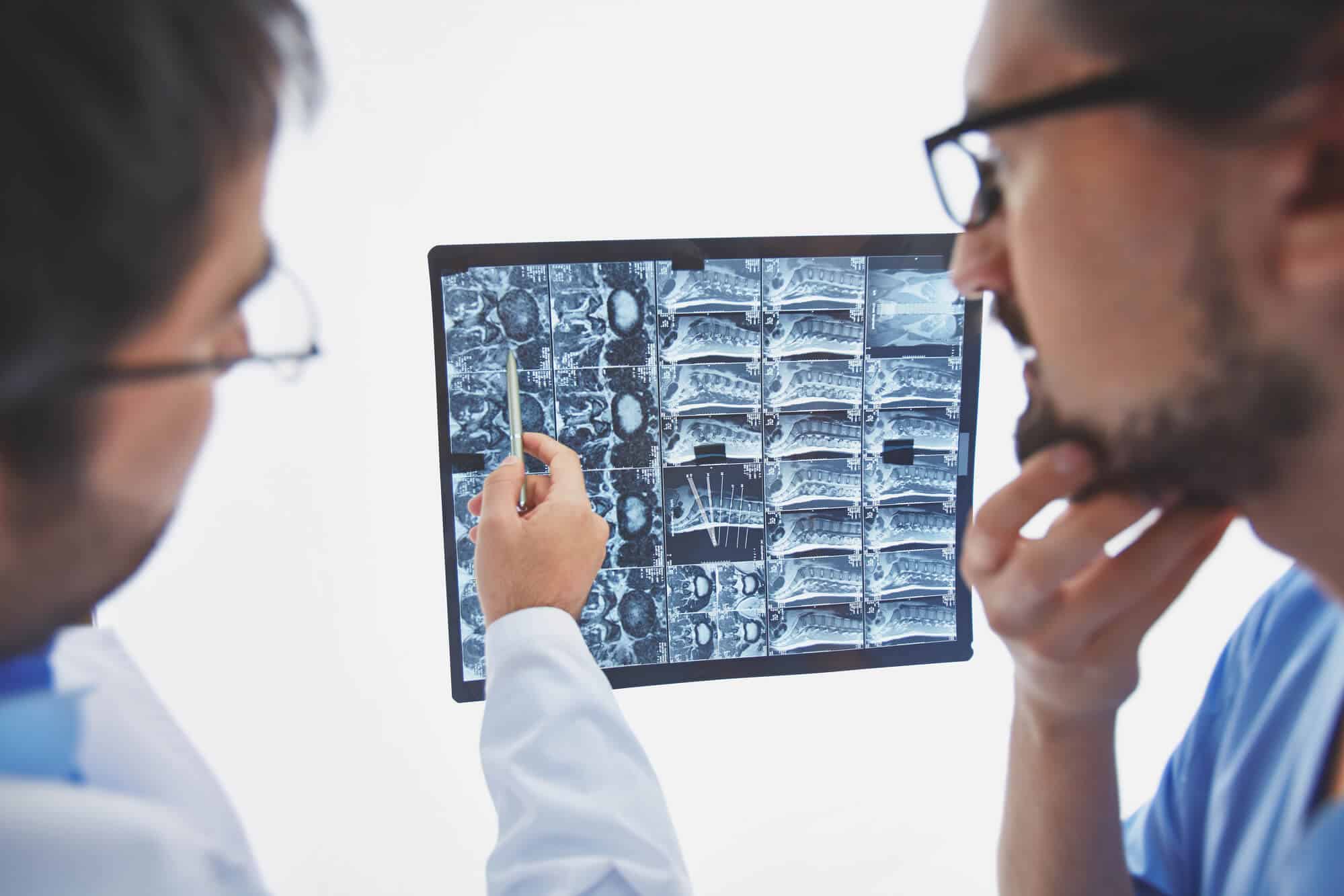Working in the medical field is one of the most rewarding sectors to work in. Being part of a team of professionals and making a difference to the lives of people on a daily basis is incredibly rewarding.
Being a radiologist is no different, radiologists are often the first to diagnose and identify the ailment of a patient.
Radiologists are physicians that specialize in using and examining medical imaging. They use the imaging to diagnose all types of illness. From diseases to broken bones, and will offer a treatment plan or refer to patient in most cases.
Medical School
$71,670
Yes
They look through patient’s medical histories, carry out physical examinations, and request the necessary imaging that will help them see areas of the body in more detail. If you’re interested in training to be a radiologist, a long, fulfilling, and ever-evolving career awaits you.
Radiologists specialize in diagnosing diseases, injuries, and other medical concerns. This is done primarily by using imaging techniques such as x-rays, magnetic resonance imaging (MRI), ultrasound, nuclear medicine positron emission tomography, and computed tomography (CT).
They are typically behind screens analyzing the images and consulting with other doctors to form a diagnosis. They can request to see the patient and perform some physical examinations, or take further images if they see cause to do so.
You Might Also Like:
Radiologist Duties
- Perform medical imaging techniques such as X-rays, MRIs, CT scans, ultrasounds, etc.
- Interpreting said imaging results
- Diagnosing conditions
- Recommending future treatment plans
- Treating diseases via radiation and other image-guided therapeutic intervention techniques
- Directing radiologic technicians in their duties
Important Qualities of a Radiologist
Attending to patients, using a wide range of imaging technology, and helping other healthcare professionals to diagnose and treat medical issues requires a diverse skill-set. Outside of the medical qualifications there are various qualities that make the role easier and more fulfilling.
Eye for Detail
Having a good eye for small details is very important. Being able to read and interpret the images of body parts isn’t always obvious. Having a good eye for detail to start with is an advantage, along with learning more the longer you are in the role.
Great People Skills
As with all medical professions that deal with patients face-to-face, people skills are a huge advantage. Realistically you have to have good people skills. Although it’s an area of your skill-set that can be worked on over time.
Physically Fit
Being a radiologist often requires long shifts and in some practices a long time on your feet. Being in good physical condition makes this aspect of the job a lot easier. Physical strength is also desirable and examining and moving patients will often need to be done by hand.
Good Technical Skills
Radiologists use technical machinery. There are frequent advancements in the tools available to members of the medical profession, and being able to learn how to use them quickly is an advantage.
Radiologist Working Environment
Most radiologists typically work in hospitals and private practices. With access to modern technology, it’s also possible for radiologists to work remotely. Not all radiologists see patients face-to-face, some just analyze the images and make a diagnosis.

Radiologist Education Requirements
The road to becoming a radiologist is long and difficult.
Radiologists must first complete a bachelor’s degree from a 4-year university. Afterward, they must attend a 4-year medical program and achieve their M.D. Medical school consists of 2 years of classroom instruction then 2 years of clinical rotations in different fields such as pediatrics, psychiatry, surgery, and internal medicine.
After graduating from medical school, one must complete a further radiology residency where they become specialized in the field of radiology.
Residents must complete rotations in specific subfields of radiology and conduct their own research.
A radiology residency can take up to 4-5 years to complete. Afterward, many radiologists complete fellowships to become more specialized.
Additionally, the emergence of new medical technologies requires radiologists to take continuing education courses and undergo extra training to stay up to date on their knowledge.
Accreditation
All radiology residency programs must be accredited by the Accreditation Council for Graduate Medical Education (ACGME).
The ACGME oversee the educational standards for all post-graduate MD and DO physicians.
Accreditation of a residency program means that the program abides by strict educational and training guidelines as set down by the ACGME, which is comprised of members from organizations such as the Americal Medical Association (AMA), American Board of Medical Specialties (ABMS), and American Hospital Association (AHA).
Radiology residency programs must offer a specific curriculum that incorporates various subfields of radiology, including diagnostic radiology, interventional radiology, neuroradiology, pediatric radiology, radiation oncology and more.
Becoming a Radiologist
High School Preparation
Anatomy and Physiology aka Biology II is the first course you should consider taking as it will help you with your studies and will also give you extra credits for college.
Take as much as chemistry and physics classes you can as they will help you prepare for the coursework when doing your bachelor degree.
Math is the cornerstone of science so in order to understand the complex scientific theories you will face at your studies you need to have a deep understanding of math. Our advice is to take all the math classes you can even the AP ones.
What You’ll Study
Since radiology is a highly specialized profession, education starts directly after high school at a 4-year university.
Most potential doctors major in a STEM field (i.e. biology, biochemistry, etc) though you do not have to have a specific degree to apply to medical school. You do however have to take a certain number of prerequisite courses while in undergrad.
Most medical schools require:
- One year of biology with lab
- One year of both general and organic chemistry with lab
- One semester of biochemistry
- One year of physics with lab
- One year of English

Specific medical schools differ in their prerequisites so make sure to figure out which course your intended medical school requires.
During medical school, students are trained in the basic theory and practice of being a doctor. The first two years generally involve in-class instruction. Classes range from professional development courses, patient interaction courses, clinical reasoning courses, and medical ethics. The next two years involve clinical rotations where students spend time working in different areas of medicine.
After completing an MD, post-grads are required to pick a residency to train in a specialized area of medicine.
All radiology residency programs in the US must feature a core curriculum as reviewed and accredited by the ACGME. Residency curriculums are meant to give explicit training to particular subfields of radiology.
Radiology curriculums are normally focused around clinical practice. As such, much of your residency training will involve dealing with actual patients and working as a doctor.
Education may include rotations on the following areas of radiology:
- Body imaging
- Breast imaging
- CT and MR Angiography
- Diagnostic Sonography
- Nuclear Radiology
- Vascular and interventional radiology
- Interventional oncology
- Lectures and case conferences
- Program leadership development
- Physics courses
Most radiology residency programs incorporate physics into their curriculum as radiologists must have intimate knowledge of the physics behind the diagnostic tools they use.
The last year or two of residency is more flexible and resident can choose which elective they want to perform rotations in.
Most residency programs also involve independent research. During your time as a resident, you will be working as a physician under the supervision of attendants.
Lastly, before one can operate as a radiologist without supervision, they must complete a fellowship after their residency.
Fellows can act as attending physicians in the generalist field in which they were trained. Once completing a fellowship, the physician is permitted to work as a radiologist without the direct supervision of others in the specialty.

Training Information & Types of Radiology Degrees
All radiologists are doctors and so require at least an MD to practice. Generally, to achieve an MD you have to previously complete a 4-year bachelor’s degree.
After completing their MD, radiologists attend residency where they receive extra training and become licensed to operate as a radiologist.
Step 1: Bachelor’s Degree
The first step to becoming a radiologist is earning a bachelor’s degree from a 4-year university.
There are no specific degree requirements to apply to medical school, though the majority of med school applicants have a major in one of the sciences.
The single most common major group for med school applicants is a degree in the biological sciences.
However, the 3 major groups most likely to be accepted to med school are degrees in the physical sciences, humanities, and math/statistics. Many applicants receive their master’s degree before applying.
Admission Requirements
Applying to a 4-year degree requires a high school diploma, letters of recommendation, and most of the time standardized test scores (ACT or SAT).
Some universities may have community service requirements.
Courses
There are no degree requirements for applying to med school but most med schools require a certain number of prerequisite courses to make sure applicants have a solid background in the sciences.
If you are majoring in a STEM field, then a hypothetical curriculum for a semester might look like:
- General Chem I lecture and lab
- Physics I lecture and lab
- Psych 101
- Biology lecture and lab
- Organic Chem lecture and lab
- Calculus I
Additionally, many college students looking to go to med school work in doctor’s offices and hospitals to get some experience working in the medical field.
Step 2: M.D.
The next step is to get into medical school and earn your MD. Most med schools are 4-year programs The program is split into two components. For the first two years, education is mostly in-class lectures and theory. The next two years involve clinical rotations in various fields of medicine.
Medical school education involves more than just the scientific side of medicine. Medical students learn how to interact with patients and families and learn about the ethical dilemmas surrounding the medical profession.
This humanistic side of medical education is just as important as the clinical scientific side.
Admission Requirements
Medical schools require applicants to have completed a 4-year degree and also have to take prerequisite courses.
Med schools also require students to take the MCAT, a national standardized exam used for med school admissions.
The MCAT has sections on math, biology, chemistry, physics, and a writing portion.
Most med schools also require applicants to send in letters of recommendation from faculty or employers.
Med school admissions are notoriously competitive and only a fraction of applicants are admitted. As such, medical school applicants must have an excellent GPA, good MCAT test scores, and extracurricular activities.
Many medical schools want to see professional experience working in the medical field as well.
Courses
Med school education involves a battery of advanced course on medical topics and clinical rotations in different fields. A hypothetical course load for a semester of the first two years of education may look like:
- Foundations of medicine
- Cardiovascular and renal medicine
- Gastrointestinal, endocrine, and reproductive medicine
- Musculoskeletal medicine
- Medical Neuroscience
After completing course work, med students perform rotations with attending physicians in various fields of medicine such as:
- Surgery
- Psychiatry
- Pediatrics
- Internal Medicine
- Obstetrics & Gynecology
Most of the time these rotations are performed at a local hospital in the vicinity of the medical school or a research institution affiliated with the medical school.
Once completing med school, new MDs are full-fledged doctors and can work, but still require further training in the form of residencies and fellowships. Before working, new MDs must pass a licensing exam for the state they wish to practice in.

Step 3: Radiology Residency
After completing an MD, post-grads are matched into a residency program where they become specialized in a specific field of medicine.
Residency programs are offered at accredited teaching hospitals. Generally, a residency can take anywhere from 2-5 years to complete, the exact time differs depending on the specific residency program.
As a resident, you will be a “student physician,” meaning that you will actually be practicing medicine as a professional, albeit in a more supervised environment.
The point of a residency program is to train physicians in techniques specific to a subfield of medicine and to increase their knowledge so they can be independent professionals working in the field. Residencies also typically involve clinical research.
At a radiology resident, you will be working with attending physician radiologists and performing radiologic diagnostic techniques and treatments.
Admission Requirements
Applying to a residency program requires applicants to be in their final year of med school and on track to graduate.
You are responsible for researching and applying to the specific residency programs you want and programs release their admissions around April of each year.
Applications for residency programs in the US are handled by the Electronic Residency Application Service, a program run by the Association of American Medical Colleges.
The application requires you to send in your med school transcripts, licensing exam scores (USMLE or COMLEX), CV, letters of recommendation, and performance evaluations.
Most residency programs also require an in-person interview. Many hospitals cover travel expenses for interviews but some do not.
Courses & Practice
The majority of your work as a radiology resident will involve working with patients and actual radiologic techniques.
The courses and clinical practice involve rotations on areas of radiology like:
- CT and MR angiography
- Outpatient Imaging
- Diagnostic radiology
- Neuroradiology
- Emergency Radiology
- Interventional radiology
- Physics courses
Most radiology residency programs have a core structure at the beginning while in the final years, residents are encouraged to pick their own courses to personalize their career pathway. For example, you might want to focus on interventional radiology if you would like to become an interventional radiologist.
Step 4: Radiology Fellowship
A fellowship is a post-residency training program where physicians are trained to operate independently in their specialties. A fellowship can take anywhere from 2-4 years, more in some cases.
Admission Requirements
Radiologist fellows must first complete a residency program in radiology. The application process is different for different fellowships but normally involves submitting proof of completing your residency, letters of recommendation, clinical research experience, and an in-person interview.
A fellowship is a full-time job with a salary so positions are highly competitive.
Courses & Practice
There are no specific courses for a fellowship as the majority of the training involves the actual practice of medicine. Radiology fellows are often required to take part in clinical research, attend conferences, and give talks and seminars to other medical professionals.
Online Radiologist Programs
There are no online paths to becoming a radiologist. At various points during your education, particularly near the start, you may be able to take some specific online courses, but on the whole, education must be in-person. There are no accredited online medical schools and no online residency programs.
How to Get Your Radiology License
To work as a physician you must have a medical license.
Before applying to your residency program, you must take either the United States Medical Licensing Examination or the Comprehensive Osteopathic Medical Licensing Examination (COMLEX).
After passing these exams and being admitted to a residency program, you will have a “resident’s license” that will allow you to practice medicine as a resident under the direct supervision of an attending physician.
After completing a residency and fellowship, you can apply for a license in your specific subspecialty of medicine.
A post-fellow license allows physicians to operate independently in their subfield. The exact licensing requirements differ from state to state.
License Renewal
All physicians are required to take continuing education courses and clinical practice to maintain their license. License renewals are handled by the state medical board. Most states require license renewals once every 1 to 2 years.
What You Need to Do to Become a Radiologist (Quick Overview)
Let’s go over the basic steps to becoming a radiologist:
Step 1. Earn a bachelor’s degree
A bachelor’s degree is a prerequisite to applying to medical school. Any degree is allowed for applications but you need to take specific prerequisite courses in undergrad.
Step 2. Complete your MD
The next step is to get into medical school and complete your MD. At the end of medical school, you will be matched into a specific residency program.
Step 3. Complete your residency/fellowship
The next step is to complete your residency to become specialized in radiology then afterward complete a fellowship so you can work as an independent radiologist.
Step 4. Acquire/Maintain licenses
Each state has specific licensing requirements for practicing medicine. Normally licenses are granted upon passing a state Board certified exam. Every state requires periodic renewal of licenses and has continuing education requirements to maintain a medical license.
Summary
For a lot of people, when they first decide to become a radiologist or pursue any other position in the medical field the road ahead can look a little daunting.
The only way to become a fully licensed and qualified radiologist is through several stages of medical school, exams, certification, internships, residencies, and it feels like the list goes on.
Each stage is vital to your progression towards becoming a radiologist however. There is a body of knowledge to learn, theory and practical skills to develop, and the valuable hands-on experience that comes with a residency or internship placement.
As a radiologist you will be a member of the medical field. This means you abide by the code of conduct and ethics, commit to continued education, and fulfill all the licensing and education requirements.
Working in the medical field is one of the most rewarding careers you can pursue. You get to make a real difference to the lives of others on a daily basis, and you’ll be hard pushed to find someone who has qualified telling you it’s not worth every effort, bump, up and down along the way.
How Much Does It Cost to Become a Radiologist
The biggest costs for becoming a radiologist is the price of undergrad and med school. Med school can cost up to $50,000 a year meaning a 4-year medical program can run you around $200,000 in total.
Luckily, residencies and fellowships are full-time jobs so you will be paid for your work.
How Long Does It Take to Become a Radiologist
It takes a long time to become a full-fledged radiologist. 4 years of undergrad, 4 years of med school, a minimum 4 years of a residency then 1-2 years of a fellowship adds up to a total of around 15 years to become a licensed radiologist.
Associations, Groups & Resources for Radiologists
Frequently Asked Questions
Interventional radiology is a subfield of radiology focusing on the use of imaging techniques for targeted treatments of conditions. Interventional radiology involves the interpretation of diagnostic images and the manipulation of catheter tube and wires to navigate around the body.
A radiologist must both have a medical degree and have completed an accredited residency program in radiology. To work as an independent radiologist, you must have completed a further fellowship after your residency.
Becoming a radiologist takes at least 8 years of explicit education in undergrad and med school then another 5 to 7 years of clinical practice/continuing education as a resident and fellow.
Being a radiologist is a difficult discipline that requires one to have a firm grasp of the intricacies of biology, physics, chemistry, and medicine. Radiologists need to know a lot about physics so they can understand how their imaging techniques work and how physics and biology intersect.
Radiologists are at risk from all the things other doctors are at risk of; increased exposure to disease, fatigue from burnout, and psychological distress. Radiologists, in particular, are at risk of harmful radiation exposure due to the imaging techniques they use like X-rays and CT scans.
No you cannot become a radiologist online. Becoming a radiologist requires many years of intense study and practice.
Radiologist Job Growth, Salary and Outlook
According to The Bureau of Labor Statistics, the growth, salary, outlook, and job prospects for radiologists has been on an upward trend above the national average for all occupations for some time and is set to continue.
In 2018 the median pay for radiologists was . With the median for all workers across the US being you can see the salary for a radiologist is far above the average.
The medical sector is always growing and there is an increased demand for skilled technicians such as radiologists which is keeping the salary projection healthy.
This ties into the job outlook too. There is an expected increase of between just 2016-26, meaning the outlook for radiologists is almost double the average for all occupations which is .
This is largely down to the nature of the medical field. There are always new advancements in technology, the population is ageing meaning there is a greater number of people needing medical care, and medical procedures are becoming more widely available all the time.
The bottom line is, growth and outlook is very positive and it’s a career path that has a lot of security and potential.
The job security is strong due to the skilled requirements and demand for the position. Also, there are opportunities to further your education and progression as a radiologist due to the number of places you can work.
There are no signs or indications that the demand for this position or the growth rate will slow down in the future.

